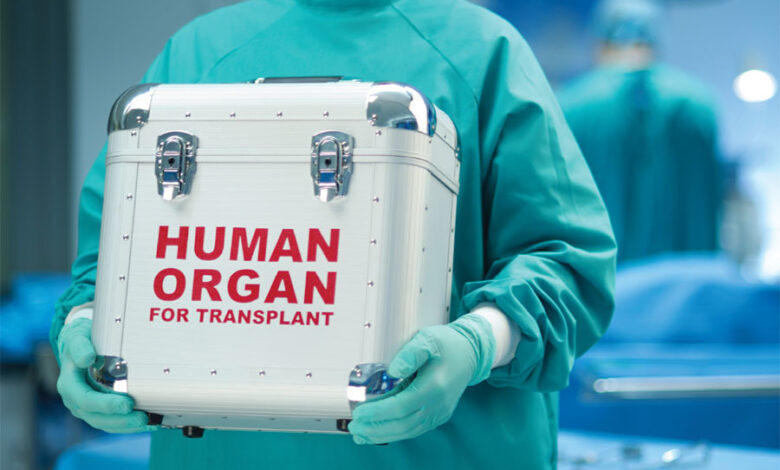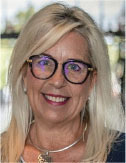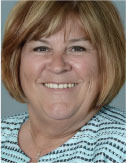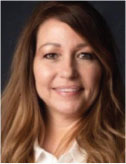
Navigating the Transplant Journey: Perspectives From Case Managers in Unique Roles
The transplant journey is a profound experience that touches the lives of patients, families and healthcare professionals alike. Case managers often play a pivotal role in guiding individuals through the complexities of transplantation. This article explores the firsthand perspectives of case managers who have experienced transplantation as recipients, donors, caregivers or family members of donors. Their stories offer a unique lens into the emotional, logistical and professional challenges and triumphs of this journey. By sharing these experiences, this article aims to deepen understanding, foster empathy and inspire best practices among professional case managers in their work with transplant patients and their support networks.
JOHANN ACHIM BEISSEL (GERMANY): A DONOR’S STORY
It is strange that, although I have worked as a director at a large health insurance company for more than 20 years and have a pretty good idea of what blood cancer is, it was not until the spring of 2010 that I registered as a volunteer stem cell donor. A nurse at the University Hospital of Muenster had been diagnosed with leukemia and was looking for a match, so the hospital joined forces with the DKMS German Bone Marrow Donor Center to organize a donor drive. The registration process was extremely efficient. I just had to fill in a form and answer a few questions about my health. Then there was a small prick in my arm for the blood sample—something that is now done by simply taking a swab with a cotton bud. With the exception of a letter confirming my registration, I did not hear anything else for almost a year. Then one day my mobile phone rang. When I picked up, a friendly voice from DKMS told me that I was a potential match. My heart began to race. The DKMS asked if I would be prepared to donate. It was the easiest question I have ever had to answer: Of course, I was! After some further testing to confirm that I was a suitable donor, I was told that I would have to donate via an operation. This would be the first time for me. The collection was initially scheduled for July 2011. But shortly before the big day, my contact at the DKMS told me the patient was not strong enough to go through with the transplant. The procedure was rescheduled for another date, which also had to be postponed. The DKMS asked if I was willing to wait. Of course, I was. The patient’s health was of utmost importance. And then everything happened very quickly. The university hospital of Dresden was the place where I had to go for my three-day stay. Admission was on October 6, 2011. The donation was set up for October 7, 2011. I slept well that night despite what lay ahead of me the next day, and, before I knew it, I was lying on the trolley on my way to the operating room. After what seemed like five minutes, I woke up again. I did not feel anything. The tube was out, and the medical staff were smiling at me. That was it; I was a bone marrow donor. While I was coming around, someone asked me if I knew who would be receiving my bone marrow. I was told that the patient was a 40-year-old American and that my bone marrow was on its way across the Atlantic. Sometime after that, toward the end of November, I sat down to write my first letter to the patient. Christmas arrived and I thought about him a lot, wondering how he was doing. Then one day I came home to find a huge envelope from the DKMS in my letterbox. Hands shaking, I opened it and found my patient`s response enclosed. But it was not just a letter from him—there were notes from his entire family. Even his dog said thank you with a paw print. This marked the beginning of two years of correspondence across the Atlantic. Checked by DKMS. As the end of the mandatory two years of anonymity drew nearer, it became clear that we wanted to visit each other as soon as possible. Because he was not yet allowed to take long flights, it was suggested that I make the first trip—I just was not sure where to. Two months before the end of the period of anonymity, I filled out a DKMS form with my details for the exchange. Then I received his information in my letterbox. His name was Lawrence “Larry” Wilson Junior. A quick glance at his phone number told me that he lived in Texas. I reached out for the phone, and when I said that I was calling from Germany, the voice cried out, “Oh, you’re my donor!” We spoke on the phone for a good hour or so then exchanged email addresses. And my first trip to Texas was arranged. It would also be my first time in the U.S. for Thanksgiving. My blood brother Larry picked me up at the IAH in Houston and we drove to Lake Jackson to meet “mom and dad.” After I had a quick shower, we sat down to eat. We talked a lot, cried many happy tears, and shared plenty of laughs. I felt like part of the family. All the friends and neighbors came over to meet me, his new “brother.” Many of them could not believe that he would not have survived without my bone marrow. I explained that donating bone marrow is a straightforward, painless process, even if surgery is needed. The key message we end our story with is: Go and get swabbed. You can see my arrival at IAH on YouTube: “Larry Wilson meets his donor.”
LORI K BRUCE: A SECOND CHANCE AT LIFE!
Growing up sick, I never really knew what life could be like without illness. Fatigue, constant medication adjustments (especially long-term steroid use), frequent doctor visits and extended hospital stays became my norm. At just 11 years old, my parents received devastating news: Their daughter had only six months to a year to live. No one expected that a week of feeling unwell would lead to a diagnosis of liver cirrhosis.
Thankfully, my parents sought a second opinion.
Fast forward to 1999, when I needed gallbladder surgery. That was the first time I was introduced to the university hospital’s transplant team—the only doctors willing to take the risk. They made the decision to remove my gallbladder and, after evaluating my condition, began following me as a pre-transplant patient. My final diagnosis: end-stage liver disease.
Being placed on the transplant list was both terrifying and hopeful. By 2002, my health was deteriorating rapidly, and with no organ donor match in sight, the transplant team suggested my family consider a living donor liver transplant. Without hesitation, my baby sister, Kristal Lindsey Moths (24 years old), stepped up.
On June 27, 2002, I woke up to a new life.
I thought the hardest part was over, but my journey was far from easy. After weeks in the hospital battling infections and internal bleeding, I was finally discharged. Yet, adjusting to life post-transplant was overwhelming—managing an endless list of medications, coping with pain, relearning how to move and facing the emotional toll of depression. I often felt worse than I had before the transplant. The fear of my body rejecting my new liver loomed over me. Just as I started to regain some stability, another infection sent me back to the hospital, requiring several weeks of at-home antibiotic treatment.
Slowly, days turned into months, and each milestone brought newfound independence. Now, nearly 23 years post-transplant, I would not change a thing.
This journey has given me a profound understanding of my sister’s love and selflessness—her gift gave me a second chance at life. It has also instilled in me a deep sense of gratitude for each day, something many take for granted. The experience has strengthened the bond between my sister and me in ways I never imagined.
Today, I embrace a new life and a new normal—one I once thought was impossible.
SAM WALKER: A FAMILY MEMBER’S PERSPECTIVE
The transplant journey is one of profound loss, hope and healing. While it is often seen as a clinical process, for those personally affected, it is deeply emotional and transformative. I experienced this firsthand when my son-in-law-to-be was killed during a home invasion. In the wake of unimaginable tragedy, his liver was donated, offering the gift of life to another. This experience profoundly shaped my understanding of transplantation, not only as a healthcare professional, but also as a grieving family member.
Losing a loved one suddenly leaves an indelible mark. The shock, grief and pain are overwhelming, and making decisions about organ donation in such moments feels surreal. Yet, amid our sorrow, we found solace in knowing that his passing could bring hope to another family. This duality—grief contrasted with the knowledge that his legacy would live on—is difficult to put into words.
As a donor’s family member, I saw how grief intertwined with gratitude. The process is deeply personal, yet it offers a unique form of solace knowing that my son-in-law-to-be’s legacy continues through others. This experience gave me a new appreciation for the role of case managers in guiding families through the emotional landscape of transplantation.
We grappled with profound emotions and unanswered questions. Who would receive his liver? Would they understand the depth of this gift? How would this change their life? Most poignantly, Chris left behind my grandson, a child too young to fully grasp the magnitude of what had happened. The impact on children in these situations is profound, requiring patience, compassion and space to process their emotions.
As a healthcare professional, I understood the logistical and medical complexities of organ transplantation. However, stepping into the role of a donor’s family member illuminated an entirely different perspective. Case managers play a critical role in this process, providing education, support and coordination for both donor and recipient families. Yet, the emotional aspect is just as important as the clinical one.
In moments of crisis, donor families need guidance and compassion. Understanding the emotional toll of making a decision about organ donation while navigating grief is crucial. Case managers who approach these conversations with empathy and sensitivity help families see that in their darkest moment, they have the power to create light for someone else.
Through this experience, I gained a deeper appreciation for case managers in transplantation. I also came to understand the unique grief and pride that coexist within donor families. My son-in-law-to-be’s legacy lives on, not just in the recipient who was given a second chance at life, but in the lessons we, as his family, carry forward.
JANET COULTER: A CAREGIVER’S EXPERIENCE
Being a caregiver is a tough job, but it can also be extremely rewarding. Caregivers experience a mixture of feelings. On one hand, being a caregiver demonstrates love and commitment and can be a rewarding personal experience. On the other hand, it can cause feelings of anxiety, worry, anger, fear, frustration, guilt, sadness and loneliness. It can be an emotional roller coaster.
I was the caregiver when my husband had a liver transplant. I experienced the roller coaster of emotions and feelings, joy and guilt, loneliness and the support of family and friends. While my husband was in the operating room receiving his new liver, my daughter and I were in the SICU waiting room waiting for an update on the progress of the surgery. About an hour and a half into the surgery, we received a visitor in the waiting room. A dear friend and case manager had brought us lunch—fried chicken, French fries and a drink. What a great surprise! I will never forget it.
I pride myself on being independent and strong—and maybe a little stubborn. After all, I am an RN and a case manager. I felt like I had been training for this role as caregiver for my husband my whole career. After my husband was discharged home, my focus was on him 24/7. Our days were full of recovery activities: PT, OT, dressing changes, blood sugar checks, many medications, B/P checks and daily weights. It seemed as soon as we completed the morning routine, it was time for lunch and the routine started over again. It was like Groundhog Day with Bill Murray.
Because my husband was immunosuppressed and we were in the middle of a pandemic, visitors were not allowed in our home. Social contact was by phone calls and cards. My husband especially liked it when he received mail. Many people offered to help during my husband’s recovery period, and I always responded with “Thank you” and “I’ll let you know….” One day I went outside to sweep off the sidewalk between our front porch and the driveway. In those few minutes outside—away from the situation—I started to cry and realized how stressed I was. It was then that I understood that I needed some support. I was stressed and overwhelmed—physically, emotionally and mentally. I decided it would be okay to accept the assistance that was offered. This decision made a world of difference. Our family and friends ran errands, went to the grocery store, brought in dressing supplies, and a wide variety of things. Co-workers offered to send meals. Menus from local restaurants were emailed to us along with instructions to select what we wanted and the date/time for the meal to be delivered. This was perfect for us as my husband was on a special diet and we could plan the meals according to our schedule. The doorbell rang one afternoon, and a Brownie Girl Scout handed us several boxes of Girl Scout cookies. We told her that we had not ordered any cookies. She responded that someone had ordered and paid for the cookies with instructions to deliver them to us. What a great surprise! We received several surprises like that! My daughter mailed a care package every week, and my husband was delighted when he saw a package on the front porch! It was the highlight of his day! My husband and I were shown so much kindness and caring from family, friends and co-workers. Every kindness shown to him was, in turn, a kindness shown to me.
Case managers can play an important role in decreasing the mental, physical and emotional toll of being a caregiver. Caregivers need caring and compassion, too. Unfortunately, the caregiver often neglects their own physical needs. Case managers need to encourage caregivers to take care of themselves and to continue with health promotion activities. Sometimes caregivers just need someone to acknowledge their struggle and remind them that they need to be in good health to be able to provide care for someone else. Another important step is to encourage caregivers to seek and accept the support of others. Many caregivers are reluctant to ask for or accept help. Remind them that reaching out for help is a sign of personal strength, not weakness.
It has been six years since the transplant, and my husband has totally recovered and is doing very well. I learned many things during this adventure. I learned that even small gestures can mean a great deal to the receiver. Accepting assistance was lifechanging. Thinking you can feel happy the whole time you are the caregiver is unrealistic. But if you focus on the positive, find joy in what you are doing, and have a positive outlook, being a caregiver can be extremely rewarding and have healthy outcomes for the caregiver as well as the patient. Caregivers need care, too.
SUMMARY
Organ donation is an extraordinary act of generosity. As case managers, we have the privilege of walking alongside families in these pivotal moments, ensuring that the gift of life is honored with dignity and compassion. By sharing these perspectives, it is hoped that we as case managers can enhance support for donors, recipients, families and caregivers while fostering a system that prioritizes medical success and human connection.
 Johann Achim Beissel. Born June 1963. Master’s degree in healthcare and hospital management. Various internships at HMO Kaiser Permanente Southern California, Orange County, CA, USA. More than 30 years of experience in leading healthcare management positions. Head of Inpatient Management and Hospital Care Management BIG, Dortmund, Germany. Member of CMSA since 2010. Nominated for the MSD Health Award 2017 “Patient Management Psychiatry/Adherence Coaching.” DKMS Ambassador and Life Safer – we delete blood cancer – get swabbed.
Johann Achim Beissel. Born June 1963. Master’s degree in healthcare and hospital management. Various internships at HMO Kaiser Permanente Southern California, Orange County, CA, USA. More than 30 years of experience in leading healthcare management positions. Head of Inpatient Management and Hospital Care Management BIG, Dortmund, Germany. Member of CMSA since 2010. Nominated for the MSD Health Award 2017 “Patient Management Psychiatry/Adherence Coaching.” DKMS Ambassador and Life Safer – we delete blood cancer – get swabbed.




